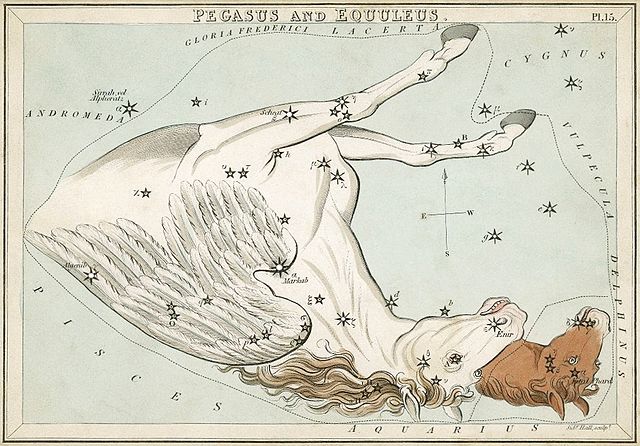HR 8799 is a roughly 30 million-year-old main-sequence star located 133.3 light-years away from Earth in the constellation of Pegasus. It has roughly 1.5 times the Sun's mass and 4.9 times its luminosity. It is part of a system that also contains a debris disk and at least four massive planets. Those planets, along with Fomalhaut b, were the first exoplanets whose orbital motion was confirmed by direct imaging. The star is a Gamma Doradus variable: its luminosity changes because of non-radial pulsations of its surface. The star is also classified as a Lambda Boötis star, which means its surface layers are depleted in iron peak elements. It is the only known star which is simultaneously a Gamma Doradus variable, a Lambda Boötis type, and a Vega-like star.

The spectrum is that of a giant exoplanet, orbiting around the bright and very young star HR 8799, about 130 light-years away. This spectrum of the star and the planet was obtained with the NACO adaptive optics instrument on ESO's Very Large Telescope.
Spitzer infrared image of HR 8799's debris disk, January 2009. The small dot in the centre is the size of Pluto's orbit.
Direct image of exoplanets around the star HR 8799 using a vortex coronagraph on a 1.5 m portion of the Hale Telescope
Pegasus is a constellation in the northern sky, named after the winged horse Pegasus in Greek mythology. It was one of the 48 constellations listed by the 2nd-century astronomer Ptolemy, and is one of the 88 constellations recognised today.
Pegasus with the foal Equuleus next to it, as depicted in Urania's Mirror, a set of constellation cards published in London c.1825. The horses appear upside-down in relation to the constellations around them.
The constellation Pegasus as it can be seen by the naked eye
Pegasus from Al-Sufi's Book of Fixed Stars, dated 1009-10
Stephan's Quintet photographed by the James Webb Space Telescope







